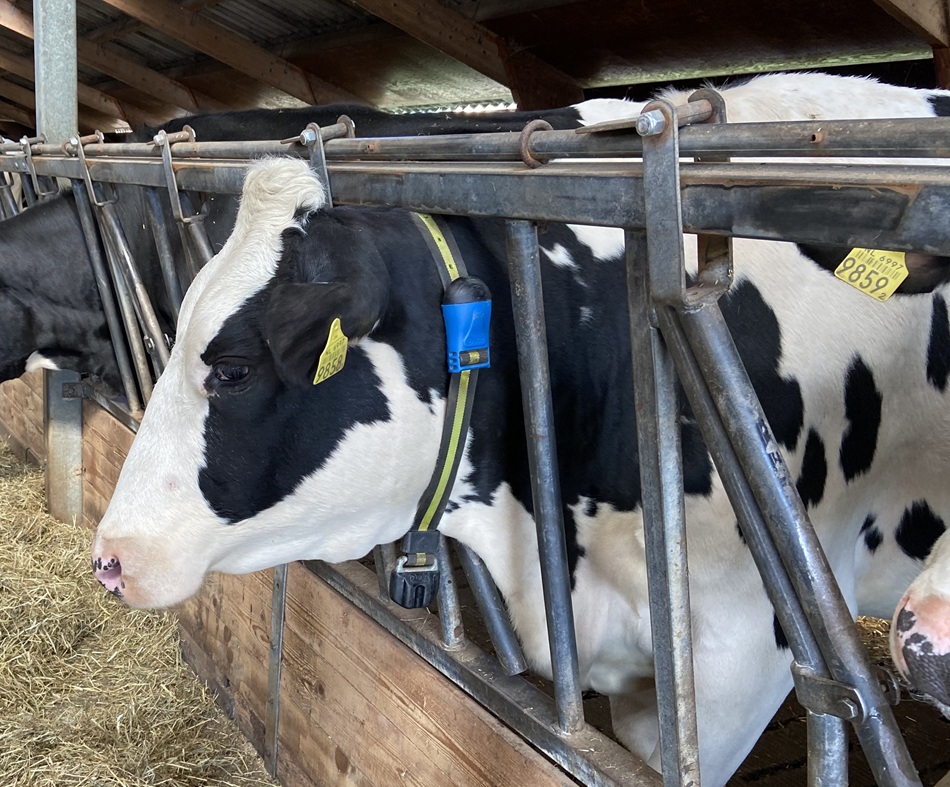The digital revolution transforming animal health

Talking about artificial intelligence in the field of animal health might have sounded like science fiction many years ago. Today, however, it’s a palpable reality that’s transforming the livestock sector. And it’s not just about technological advances; it’s also a paradigm shift that redefines how we understand animal health, animal welfare, and the sustainability of the sector.
The animal health sector is currently at the forefront of a technological and digital transformation, with major advances in biotechnology, detection tools, robotics, genomic testing, and advanced vaccines, among others, which will become essential tools for a sustainable future for both livestock farming and the veterinary profession.
Digitalisation now allows veterinary professionals and livestock farmers to manage their farms with tasks such as disease prediction and prevention, monitoring for signs of illness or heat, infection diagnosis, and treatment. Sensors can monitor animal health in real time, allowing the onset of diseases to be anticipated and alerting to changes in cattle behaviour. For example, sensors used to identify rumination in cows can detect diseases up to 5 days before clinical signs are discovered, while smart collars with monitoring technologies linked to phone applications help farmers accurately identify the various fertility stages of dairy cows, detecting up to 95% of actual heats, improving farm efficiency and reducing milk production losses. Even the use of ear tags allows for the integration of data that can be analysed to optimise traceability, production, and, ultimately, manage health in accordance with regulations applied throughout the European Union. Such advances not only improve productivity but also enhance animal welfare and the demands of an increasingly informed consumer on health, animal welfare, and sustainability.
Interconnectivity is accelerating the advancement of these technologies, allowing data from ear sensors, smart collars, and farm monitoring systems to be integrated and analysed together, providing a comprehensive, real-time view of the entire herd’s health status.
Visual monitoring technology is also revolutionising the sector: monitoring cattle through cameras connected to phone apps has been shown to reduce lameness in a herd from 25.4% to 13.5% in six-month trials, increasing early detection from 2% to 7%.
In the field of automated feeding, automatic feeders can read both feeding and behavioural patterns, using highly accurate parameters to detect bovine respiratory disease at least one day before clinical diagnosis.
The animal health and nutrition industries demonstrate day after day that they are at the forefront of this digital revolution in innovative activities. In Spain, for example, the sector is firmly committed to research, development and innovation, dedicating an average of 6% of its total turnover, and in some cases reaching 18%, in the 28 high-tech centres spread across the country, where innovative solutions are designed and developed that make it possible to provide veterinary medicines and other animal health and nutrition products of the highest quality, safety, and efficacy to the public.
Big data analytics enable veterinarians to model various animal health scenarios and make informed, preventive decisions. Veterinary intelligence tools, powered by millions of data points, can now anticipate disease risk and recommend specific actions at the farm and individual animal levels.
Smart environmental control systems are also transforming farms. On pig and poultry farms, environmental sensors linked to automatic control systems can monitor and adjust the appropriate environmental conditions, ensuring optimal conditions at all times and reducing stress factors. New sound monitoring technology on pig farms helps farmers detect and respond to respiratory diseases up to five days earlier than conventional methods.
Using data captured through live video cameras and fed into algorithms, poultry farmers can be alerted when birds should be kept indoors to minimise the risk of introducing avian influenza.
The challenges facing society and the animal health industry, in particular, such as climate change, antimicrobial resistance, and social demands for greater animal welfare and sustainability, require rapid and precise solutions. In this context, digitalisation, big data, and artificial intelligence are key. These solutions should never replace veterinary professionals or livestock farmers, but rather assist them in their activities.
In short, digitalisation and artificial intelligence are already a reality in the animal health and nutrition sector and in the livestock sector, and their impact goes beyond innovation: it represents a new way of understanding the relationship between humans and animals, where technology becomes a bridge to better care, effective prevention, and greater respect for animals. Concrete examples of these technologies demonstrate that we are witnessing a transformation that is already generating measurable results in terms of animal health and welfare, public health, and economic and environmental sustainability, strengthening the “One Health” concept.
Source: Somos Ganaderìa (Spain)